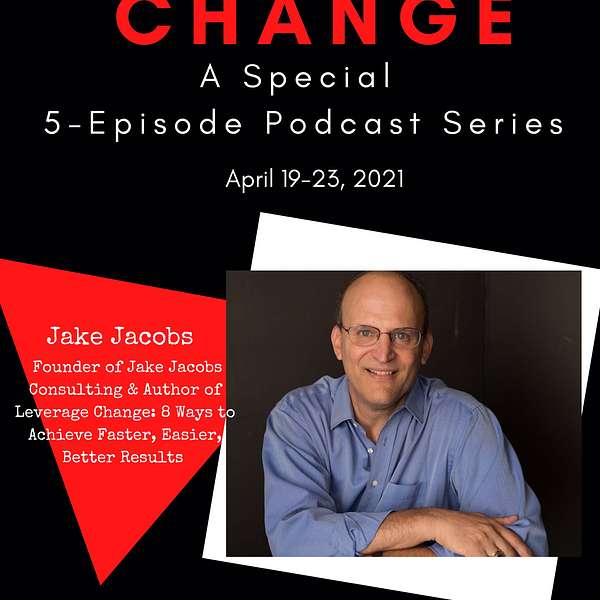
[Trauma-Informed] Leadership Uncensored
[Trauma-Informed] Leadership Uncensored
Season 2, Episode 11: Jake Jacobs. Leverage Change: 8 Ways To Achieve Faster, Easier, Better Results
5-Part Special Series on Change
The 5th and Final Podcast on Change: Jake Jacobs helps organizations, teams, and individuals make monumental changes. Over the past 35 years, Jake has worked in 61 industries, from high tech to manufacturing. He has consulted to 96 organizations, from Fortune 50 to national non-profits. He has supported more than 210,000 people directly on important changes to their business. What kinds of changes? Everything from strategy to culture to mergers and acquisitions.
Jake has partnered with CEOs, front-line workers and change makers in middle management in organizations like Ford, Kraft and Marriott and has also helped create change in the City of New York, U.K.’s National Health Service and the United States Army and Navy.
His set of principles work with any system of change you’re using. They turbocharge your work, making it possible to achieve results faster, easier and better than you dreamed possible. They help get more done with less. Less confusion, less time wasted and fewer problems.
He is always thinking, “To achieve your desired result, what are the few smart actions that will make the biggest difference?” He’ll get everyone in your organization asking that question. Everyday. Not just talk, but action and results. He is an author of two books, Real Time Strategic Change and You Don’t Have to Do It Alone and a third book released on May 4th entitled, Leverage Change: 8 Ways To Achieve Faster, Easier, Better Results
----
Businesses must constantly transform and adapt to meet a variety of challenges—from changes in technology, to the rise of new competitors, to a shift in laws, regulations, or underlying economic trends. Failure to do so could lead to loss of talent, stagnation or, worse, failure. Change has a starting point (current state) and an end point (future state) and right in the middle are people. Business sectors are still responding to the prolonged COVID crisis, which has impacted—and sometimes traumatized—each member of the workforce in unique ways. Countless stories of toxic work environments and people not being their “best selves” are surfacing in video blogs and HR complaints, to name a couple. Leading dynamic organizations through any type of change is difficult, and it’s even harder when employees are experiencing high levels of emotional distress inside and outside of the workplace.